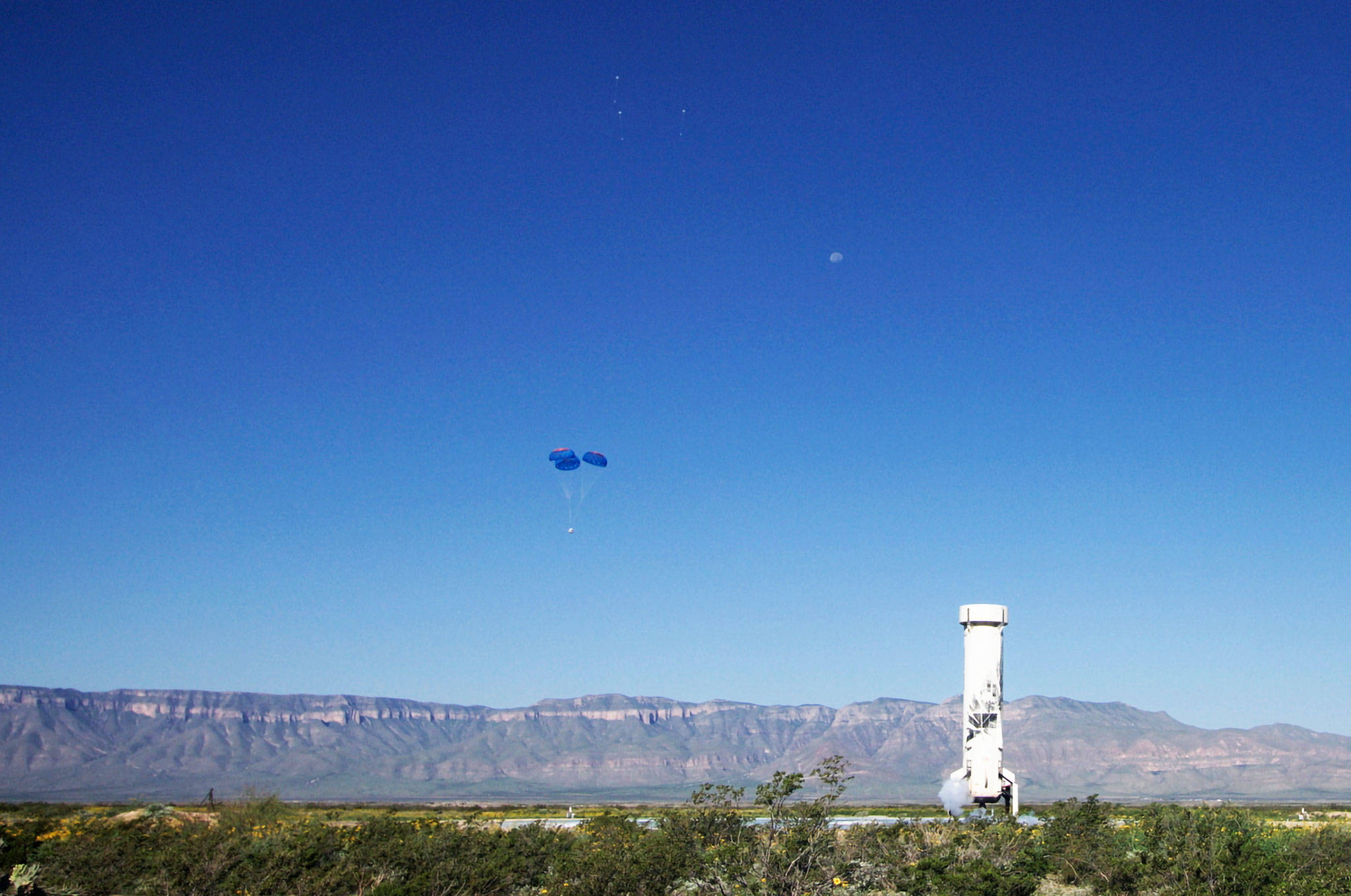Kent-based Blue Origin successfully completed the 17th New Shepard mission to space and back for the program, and the eighth consecutive flight for this particular vehicle.
The Aug. 26 flight featured commercial payloads on board, several of which were supported by NASA’s Flight Opportunities program and included a second flight of the Deorbit, Descent, and Landing (DDL) Sensor Demonstration under a NASA Tipping Point partnership, according to Blue Origin. The DDL demonstration, which flew for the second time mounted on the exterior of New Shepard’s booster, tested technology designed to achieve high-accuracy landing for future Moon missions. This aims to enable long-term lunar exploration.
“After flying more than 100 payloads to space on New Shepard, today’s eighth flight of this vehicle carried NASA-sponsored and commercial experiments, including the second flight of NASA’s lunar landing technology that will one day allow us to further explore the Moon’s surface,” said Blue Origin CEO Bob Smith in an email. “We are grateful to NASA for partnering with us once again on this experiment, and we are proud of the Blue Origin team for executing a great flight in support of all our customers.”
Other payload highlights included a second flight of the OSCAR Trash-to-Gas payload, which evaluated a system that helps process trash samples into useful gases; the University of Florida’s third flight of the “Biological Imaging in Support of Suborbital Science” experiment, which further tested the calibration of data collection for biological experiments; and Suborbital Triptych, a work of art by Ghanaian artist Amoako Boafo painted on three exterior panels on the crew capsule.
Blue Origin, founded by Amazon founder Jeff Bezos, employs more than 3,500 across the nation and more than 2,500 in Kent. The company’s goals include offering people rides into space and eventually to have people living and working in space. The company opened in Kent in 2000 and expanded its headquarters in 2020 to a 236,000-square-foot blue-colored facility along 76th Avenue South between South 212th and South 228th streets.
Key mission stats
• 8th consecutive successful flight to space and back for this New Shepard vehicle.
• 18th consecutive successful crew capsule landing (every flight in program, including a pad escape test in 2012).
• The crew capsule reached an apogee of 343,787 ft above ground level (AGL) / 347,434 ft mean sea level (MSL) (104.8 km AGL / 105.9 km MSL).
• The booster reached an apogee of 343,385 ft AGL / 347,032 ft MSL (104.7 km AGL / 105.8 km MSL).
• The mission elapsed time was 10 minutes, 15 seconds and the max ascent velocity was 2,232 mph / 3,592 km/h.
• The mission carried thousands of postcards from Club for the Future, Blue Origin’s foundation.
All mission crew and onsite personnel supporting this launch exercised safety measures to mitigate COVID-19 risks to themselves, customers, and surrounding communities.
Talk to us
Please share your story tips by emailing editor@kentreporter.com.
To share your opinion for publication, submit a letter through our website https://www.kentreporter.com/submit-letter/. Include your name, address and daytime phone number. (We’ll only publish your name and hometown.) Please keep letters to 300 words or less.

